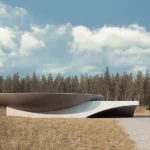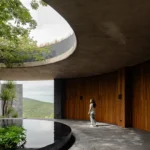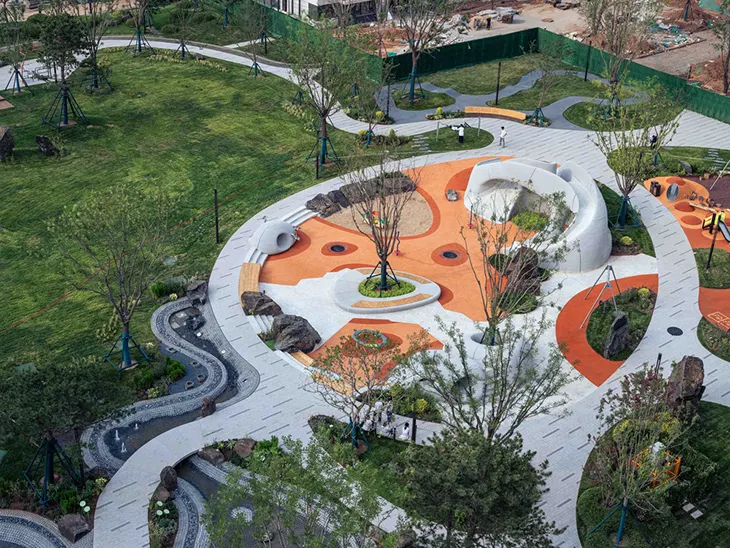
Unveiled in July 2025, Boulder Park sits at the center of Yunwan Garden in Jinan, China, introducing a new typology for public space: one that integrates 3D-printed concrete technology with the symbolic permanence of natural boulders. Designed by Shanghai-based XISUI Design, the park merges natural topography and artificial fabrication into an immersive playground and wellness destination, tailored for intergenerational use.
LANDSCAPE
The landscape design reimagines massive boulders as more than symbolic markers, they become interactive installations. Children climb them, rest in their shadows, and cross them in shallow streams that double as play zones. The project’s standout architectural feature, however, is a dramatic rock cave built using 3D concrete printing, a technique that allows for monolithic, organic forms once impossible in traditional landscape construction.
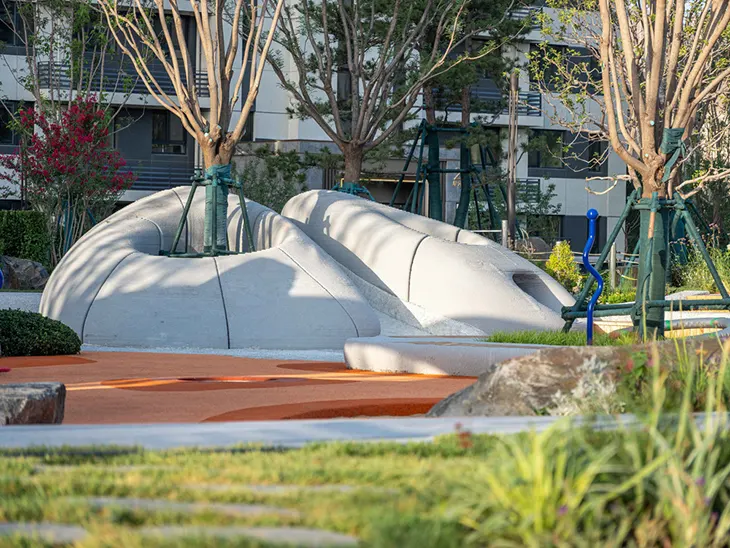
XISUI divided the park into five distinct zones: All-Age Boulder Playground, Water Garden, Forest Garden, Stone Garden, and Flower Garden. The design team focused primarily on the first three, aiming to foster movement, sensory development, and social connection through interaction with the natural and constructed environment.
In the All-Age Boulder Playground and Forest Garden, children encounter swings, slides, trampolines, climbing ropes, and speaking tubes, all embedded within a terrain of boulders and curved concrete forms. These aren’t surface-level interventions; the playground uses form and material to promote physical growth and environmental awareness simultaneously. The curved, cave-like spaces provide shelter, acoustic play, and tactile contrast between textures.
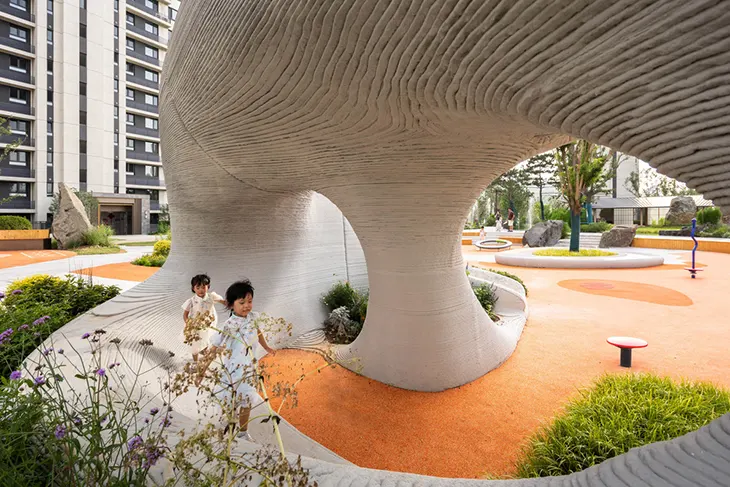
The Water Garden, located just west of the main playground, creates an outdoor water experience that emphasizes interaction and curiosity. Shallow streams, water turntables, fountains, and pressure-controlled features invite users to explore the tactile and visual properties of moving water. This section is not a typical splash zone; instead, it simulates the logic of natural systems through gentle gradients and materials that blend with the broader landscape.
What sets Boulder Park apart is its use of digitally-controlled 3D concrete printing. With this technology, XISUI achieved monolithic construction of intricate, organic forms that echo natural rock formations. These printed installations serve as both sculptural and functional elements, forming steps, tunnels, slides, and even seating, all without joints or separate modules.
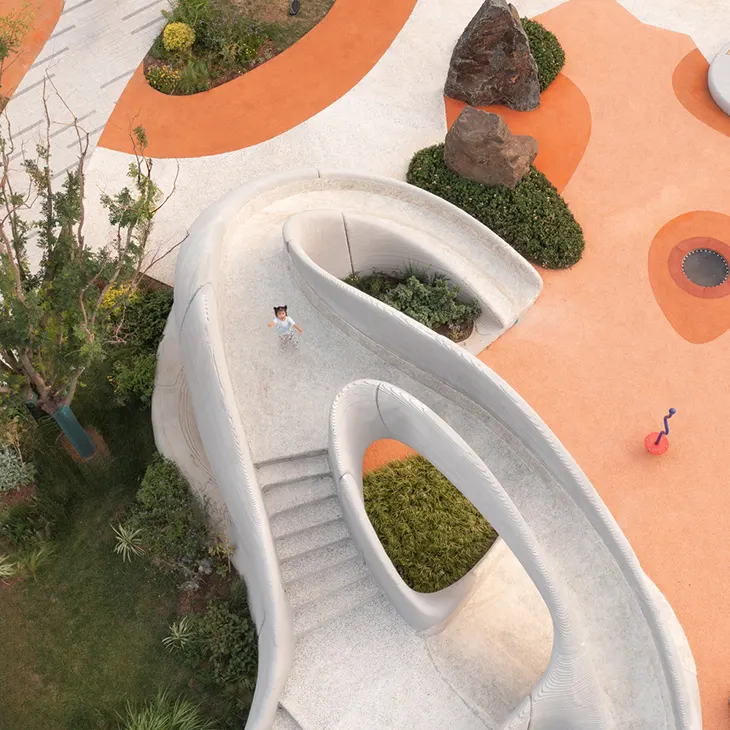
According to Hu Yihao, Lead Designer at XISUI, landscape architecture offers fertile ground for this approach. “Compared to architecture, landscape structures have fewer load requirements and simpler functions. This gives us more freedom to explore what 3D-printed concrete can really do,” he explains. The material used in Boulder Park holds an average strength of 50MPA, exceeding traditional concrete standards and ensuring both safety and durability for outdoor use.
The printed structures evoke layered canyon walls, their ribbed surface echoing geological strata. But the formal complexity doesn’t compromise usability. Each element was designed with safety in mind, smooth edges, rounded corners, and seamless surfaces help reduce risk while preserving visual complexity. The result is a sculptural environment that’s also intuitive and child-safe.
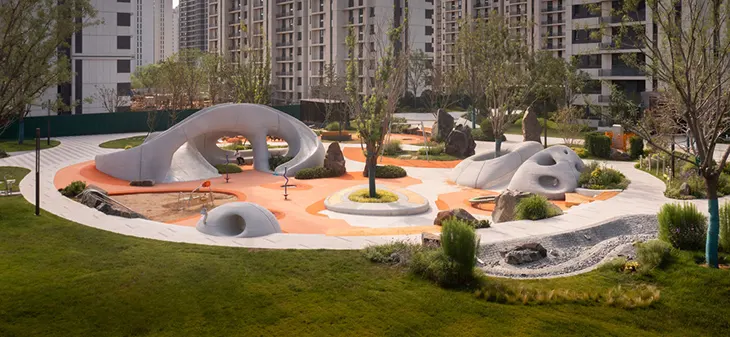
Slides and tunnels run through cave-like installations, while subtle curves double as ergonomic seating or climbing paths. Rather than feeling like synthetic play equipment, these elements mimic terrain, inviting instinctual interaction and imaginative exploration.
Boulder Park demonstrates how advanced construction methods can shape not only buildings but also shared urban experiences. By merging organic forms, tactile materials, and a digital construction process, XISUI Design creates a space that encourages exploration, community, and play, without relying on standardized solutions.
In a climate where public space must serve multiple functions, Boulder Park presents a model where technology and material sensitivity co-exist. The result is not just a new playground, but a framework for the next generation of public park design, one rooted in local context, innovation, and inclusive engagement.



